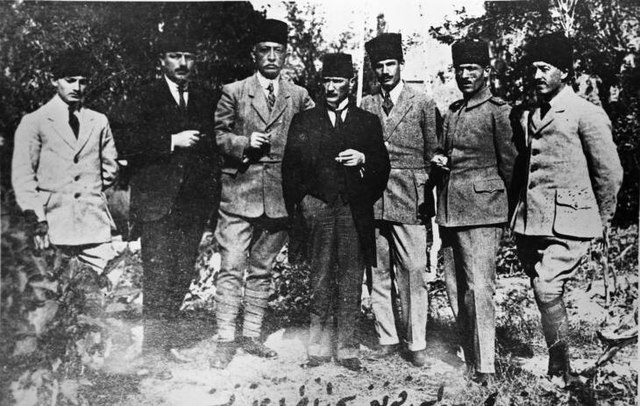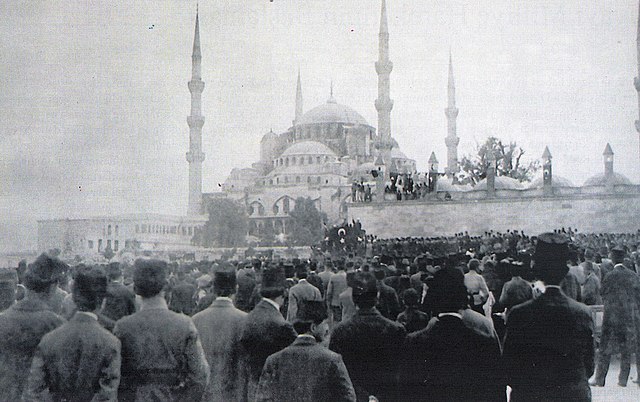Turkish National Movement
The Turkish National Movement, also known as the Anatolian Movement, the Nationalist Movement, and the Kemalists, included political and military activities of the Turkish revolutionaries that resulted in the creation and shaping of the modern Republic of Turkey, as a consequence of the defeat of the Ottoman Empire in World War I and the subsequent occupation of Constantinople and partitioning of the Ottoman Empire by the Allies under the terms of the Armistice of Mudros. The Turkish revolutionaries rebelled against this partitioning and against the Treaty of Sèvres, signed in 1920 by the Ottoman government. Most revolutionaries were former members of the Committee of Union and Progress.
Prominent nationalists at the Sivas Congress. Left to right: Ahmet Muzaffer (Kılıç), Rauf Bey (Orbay), Bekir Sami (Kunduh), Mustafa Kemal (Atatürk), Ruşen Eşref (Ünaydın), Cemil Cahit (Toydemir), Cevat Abbas (Gürer).
Mustafa Kemal Pasha during the Erzurum Congress.
The occupation of Istanbul or occupation of Constantinople, the capital of the Ottoman Empire, by British, French, Italian, and Greek forces, took place in accordance with the Armistice of Mudros, which ended Ottoman participation in the First World War. The first French troops entered the city on 12 November 1918, followed by British troops the next day. The Italian troops landed in Galata on 7 February 1919.
Louis Franchet d'Espèrey marching in Beyoğlu, 8 February 1919
Greek aviators at the San Stefano airfield, after the Mudros armistice
The armored cruiser Averof of the Greek Navy in the Bosphorus, 1919
Constantinople, 23 May 1919: Protests against the Occupation of Smyrna by the Kingdom of Greece






